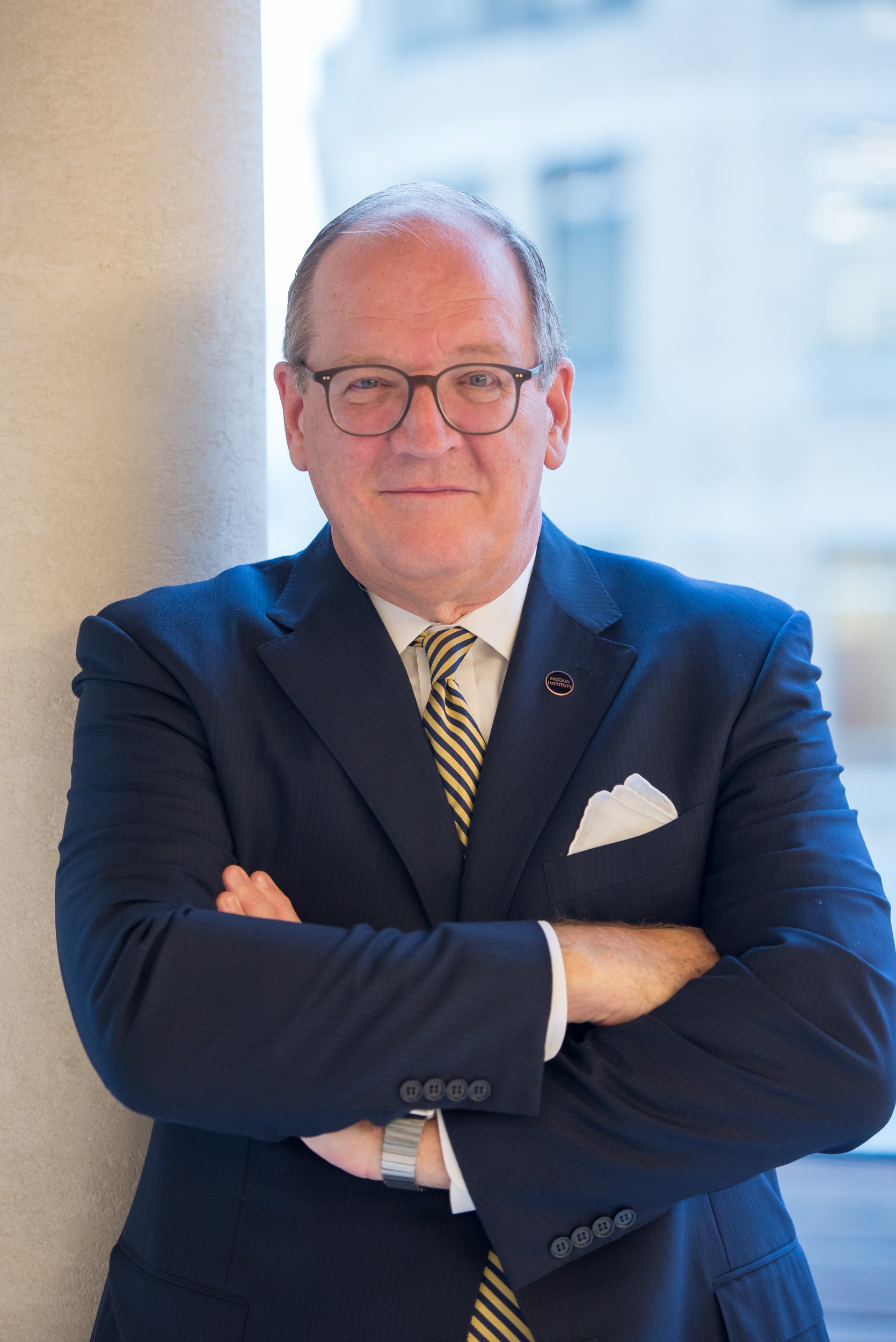When President Donald Trump made an impromptu trip to North Korea last week to shake Kim Jong-un’s hand, he made history.
The move made Trump the first sitting U.S. president to cross the demilitarized zone (DMZ) and step foot inside North Korea.
But many citizens and critics alike wondered if this act was a real step toward peace with a quicksilver dictator with a nuclear program or just a glorified photo op. Was it diplomacy, and if so, was it a good idea?
To answer this question, ASU Now reached out to Ambassador Michael C. Polt of the McCain Institute for International Leadership in Washington, D.C., where he directs the Institute’s Fellows and Leadership Programs and teaches in its Policy Design Studio as ASU Professor of Practice in International Leadership Studies.
One of America’s most distinguished senior diplomats, Polt concluded his 35-year career in September 2012 after completing an assignment as ambassador to the Republic of Estonia. Polt also served previously as U.S. ambassador to Serbia and Montenegro. Prior to his ambassadorial missions, he was principal deputy and acting assistant secretary of state for legislative affairs in the Colin Powell and Hillary Clinton state departments.
Michael C. Polt
Question: From a diplomatic perspective, was President Trump’s visit to the DMZ to say hello and shake Kim Jong-un’s hand on Sunday a good idea?
Answer: It depends if it is part of a broader strategy of achieving a diplomatic goal. A photo op alone is not diplomacy. A broad strategy which includes detailed negotiations, along with strong visual elements and high-level personal diplomacy are definitely appropriate. If there is such a strategy that includes skillful and consistent diplomacy, then the president popping in on Kim Jong-un was a good idea.
If his mission was simply to have one more visual with the North Korean leader, then that’s not enough and that’s not going to achieve U.S. foreign policy goals.
Q: Does an act like this go a long way to developing trust between the two parties?
A: It can help. Personal relationships are very, very important in diplomacy, but not by themselves. I cannot think of a single diplomatic achievement by the United States or any other country that has not also involved personal chemistry among diplomats, negotiators and national leaders. President Ronald Reagan coined the phrase “trust, but verify” for a reason. Creating an atmosphere of trust is an important element of international discourse, but only in conjunction with a hard-nosed, painstakingly achieved diplomatic underpinning. Success in international negotiations is most often achieved when all or most parties walk away with a measure of a win-win situation. “I win, you lose,” in only the rarest of circumstances ever leads to any lasting aftermath.
Q: What’s going on behind the scenes regarding the art of diplomacy that is important to take into account?
A: In any diplomatic negotiation, the majority of what’s going on is not seen in public. I hope that is what is going on with North Korea. Such confidentiality allows for face-saving maneuvers and the building of trust. It also allows for hard truths to be shared. Sometimes success in achieving a foreign policy goal can be walking away from a deal. There is a real role for public diplomacy, as it is called today. But deliberate public disclosures in diplomacy should be carefully orchestrated acts designed to achieve specific outcomes.
Q: What should be the next step?
A: Professional diplomacy below the heads of state level. The problem with summit level diplomacy is that you have no place else to go if you don’t succeed. Bread and butter diplomacy may be slow and even boring, but it delivers detailed, multiple options that leaders can then consider and guide. Presidents, except in the most exceptional circumstances, should be breakthrough closers of a deal, not working-level negotiators. Summitry is most effective at the end of a diplomatic process, not the beginning.
Top photo: South Korean soldiers in the foreground facing a North Korean soldier in the distance across the border between the two countries. Located within the Joint Security Area inside the demilitarized zone, the blue buildings straddle the official border, and are used for meetings between representatives for the two nations. It's also the area where U.S. President Donald Trump and North Korean leader Kim Jong-un shook hands for a brief meeting on June 30. Photo by George Clark/Getty Images.
More Law, journalism and politics
Can elections results be counted quickly yet reliably?
Election results that are released as quickly as the public demands but are reliable enough to earn wide acceptance may not always be possible.At least that's what a bipartisan panel of elections…
Spring break trip to Hawaiʻi provides insight into Indigenous law
A group of Arizona State University law students spent a week in Hawaiʻi for spring break. And while they did take in some of the sites, sounds and tastes of the tropical destination, the trip…

LA journalists and officials gather to connect and salute fire coverage
Recognition of Los Angeles-area media coverage of the region’s January wildfires was the primary message as hundreds gathered at ASU California Center Broadway for an annual convening of journalists…



